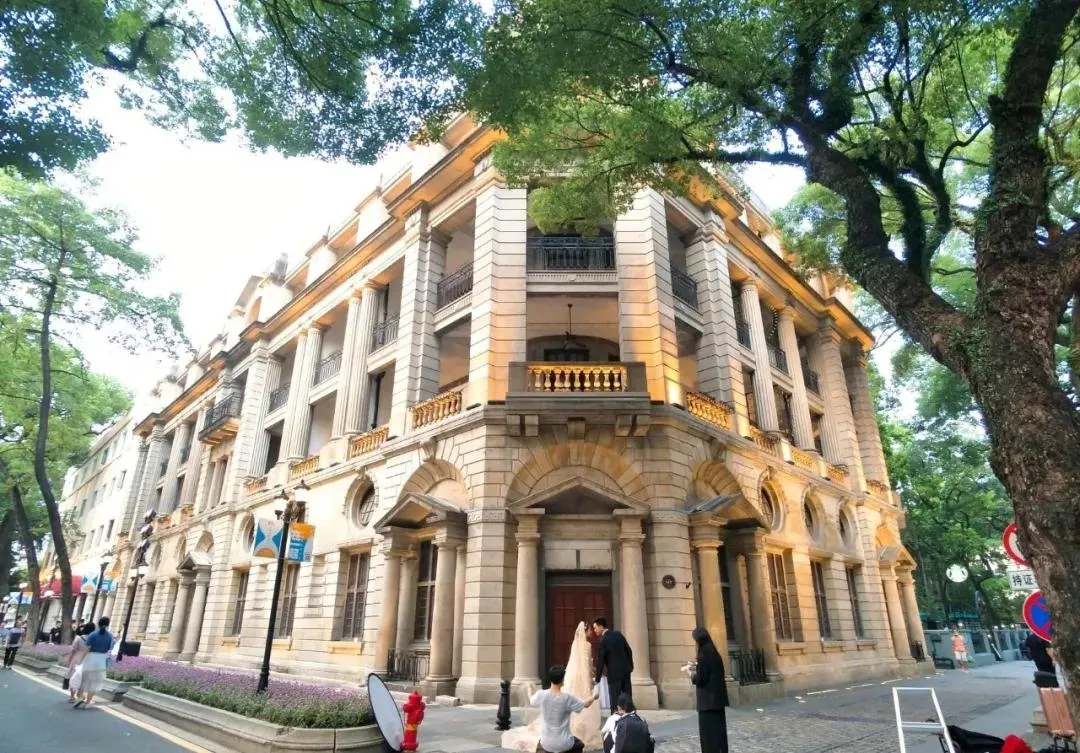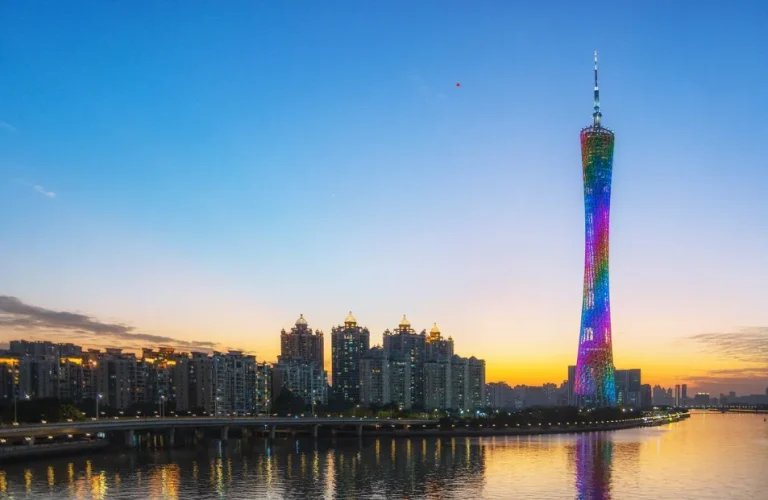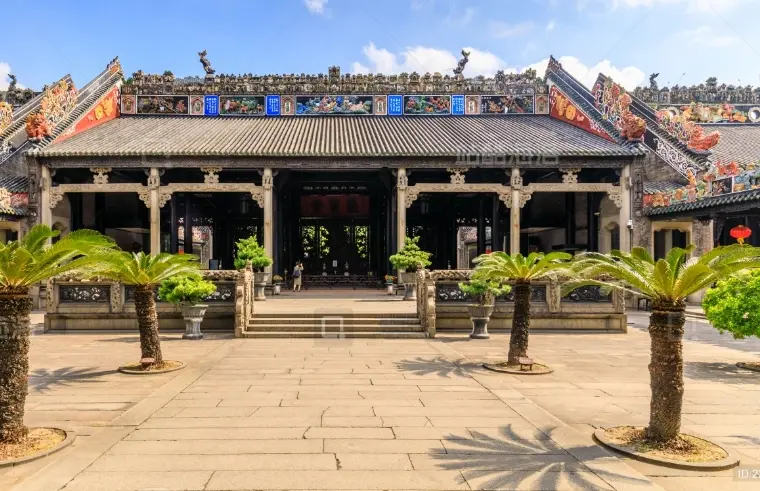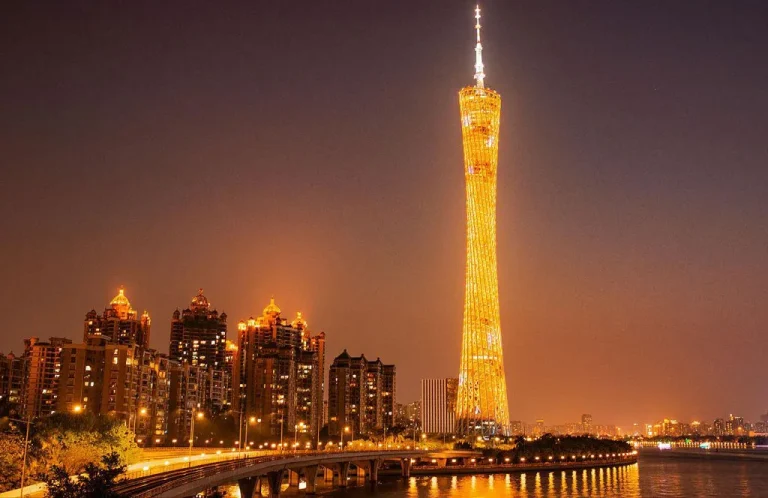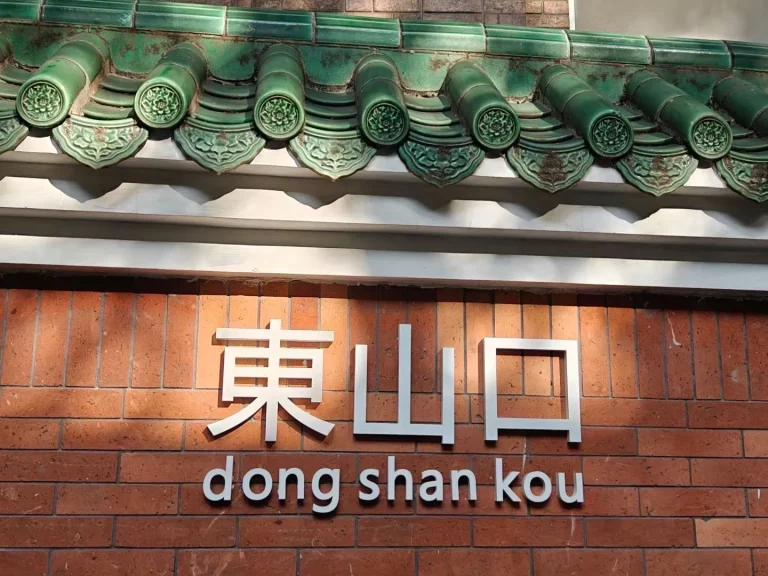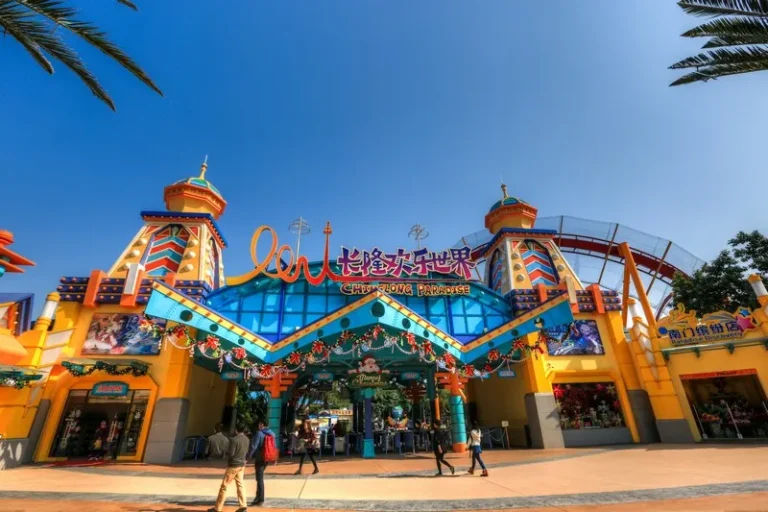Shamian Island Travel Guide: Top Things to Do in Guangzhou
Imagine stepping onto an oasis where European grandeur meets Cantonese soul. Shamian Island, a leafy 0.3 km² sanctuary in the heart of bustling Guangzhou, isn’t just a relic—it’s a living theater. Cobblestone streets once trodden by tea merchants now echo with mahjong tiles and children’s laughter, framed by 150+ colonial-era buildings draped in bougainvillea. This former foreign concession, reborn as Guangzhou’s open-air museum, invites you to wander beyond postcard views.
Forget ticking off sights. Here, history whispers through bullet-scarred archways, breakfast steams in century-old teahouses, and hidden courtyards bloom with contemporary art. Whether you crave architectural detective work, riverside qigong at dawn, or lychee-infused espresso in a repurposed bank vault, this enclave delivers layered discovery.
Our deep-dive reveals how to decode Baroque facades hiding typhoon-resistant secrets, find bronze statues that teach photography, and taste pigeon brined in jasmine tea where diplomats once schemed. Consider this your compass to the island’s soul—where every corner rewards curiosity. Ready to wander beyond the obvious?
Why Shamian Island is a Must-Visit in Guangzhou
Can concrete and foliage narrate history? This tiny enclave answers daily as banyan roots crack through 19th-century cobblestones. Unlike static museums, Shamian Island breathes through its contradictions – colonial facades framing Cantonese tea ceremonies, Gothic arches sheltering dim sum carts. This living diorama preserves Guangzhou’s complex identity where textbooks fail. Consider the numbers: 150+ heritage buildings across 0.3 square kilometers, yet locals cherish it as their communal backyard rather than a relic.
The Architecture-People Paradox
European edifices here never became sterile exhibits. At dawn, watch qigong practitioners move like water beneath French wrought-iron balconies. By afternoon, children chase hoops past the former British Consulate, now housing artisanal tea blenders. This seamless integration creates magic: where else can you photograph Victorian lampposts framing Canton Tower’s neon spire across the Pearl River?
Strategic Solitude
Paradoxically, Shamian’s isolation fuels its appeal. Created as a foreign concession after the Opium Wars, its moat-like canals now buffer urban chaos. Temperature drops 3°C upon crossing its bridges – a sensory reprieve from Guangzhou’s frenetic energy. As retiree Chen Bo explains while feeding songbirds:
“We call this ‘Guangzhou’s lungs’ – where the city exhales.”
Must-See Attractions: Shamian Island’s Historic Landmarks
What if buildings kept diaries? Shamian’s structures chronicle wars, cultural collisions, and quiet rebirths. Forget passive viewing – bring detective instincts to decipher bullet scars on Christ Church’s walls and hidden symbols in stained glass. Pro tip: Download the Shamian AR app to overlay 1920s photographs onto current facades.
Three Architectural Masterclasses
These landmarks reveal Guangzhou’s adaptive genius:
- Our Lady of Lourdes Chapel (1892): Note the mismatched spires – evidence of French missionaries’ funding struggles. Inside, discover typhoon-resistant lattice windows later adopted citywide
- Former Soviet Consulate: Hunt for hammer-and-sickle mosaics beneath modern flooring. The building’s 1.2-meter-thick walls maintain 22°C year-round
- Customs Officers’ Club: Study ceiling medallions fusing chrysanthemums (Chinese longevity) with acanthus leaves (Greek eternity)
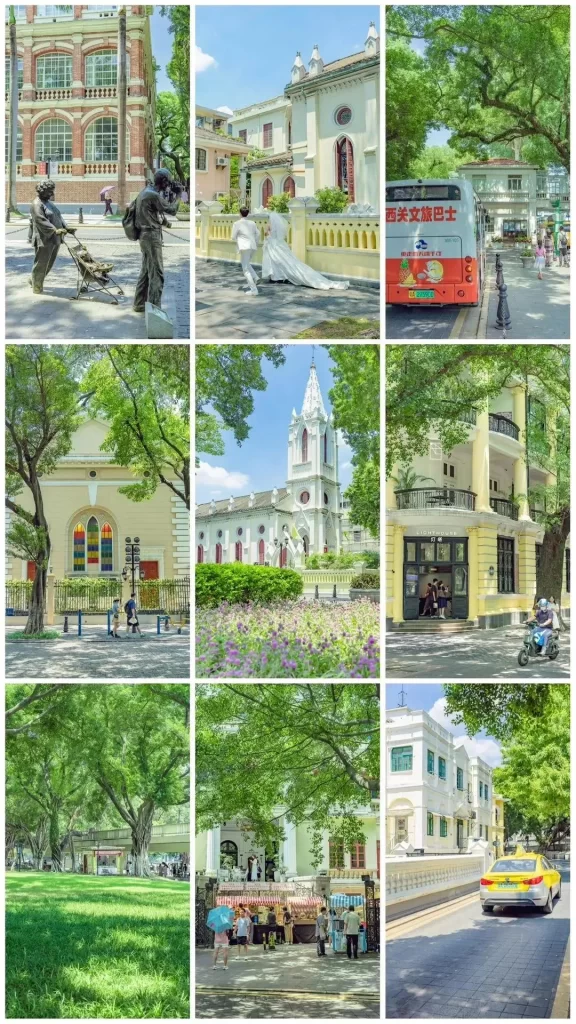
Bronze Chronicles
Beyond buildings, eight life-sized statues dot the island. Don’t miss the legendary “Camera Grandpa” near White Swan Hotel – based on real photographer Liang Jingxian who documented Shamian’s transformation since 1978. His bronze counterpart still “teaches” composition to visitors.
Top Things to Do on Shamian Island: Beyond Sightseeing
Why observe when you can co-create? Dawn unveils rituals most tourists sleep through. At Pier 4, join silver-haired locals for riverside tai chi – they’ll gesture you into formation if you linger. By 10 AM, follow the aroma of shahe fen rice noodles to family-run Xinjiji, operating since 1947.
Hands-On Heritage
Transform from spectator to participant:
- Tea Alchemy Workshop: Blend your own puerh tea at the Anglican Church annex (weekdays only)
- Shadow Puppetry: Craft leather figuries depicting Shamian legends at Polly Art Space
- Golden Hour Photography: Capture the “Pearl River Ignition” when sunset sets tower neon ablaze
Nocturnal Secrets
As dusk falls, seek unmarked doors revealing speakeasy bars in former bank vaults. Behind Building 42’s bookcase, “1930” serves lychee-infused gin while jazz trios play. For authentic thrills, join locals betting on cricket fights in Maple Lane courtyards – just follow the echoing cheers.
Where to Find Shamian Island’s Hidden Gems
Turn left where tour groups turn right. Behind the faux Tudor post office, Cat Wall features mosaics honoring resident strays – find the ginger tabby nicknamed “Mayor.” Further south, Maple Lane’s crumbling walls reveal ghost signs advertising 1930s herbal remedies. These overlooked corners harbor Shamian’s soul.
Escape Routes
Combat crowds with these stealth tactics:
- Wedding Photographer Hack: Protestant Church stays empty weekdays before 10 AM when shooters arrive
- Secret Jetty #9: Fishermen share tales here over lychee wine at sunset
- Monsoon Strategy: Sudden downpours clear pathways – duck into Gallery 73’s free calligraphy exhibit
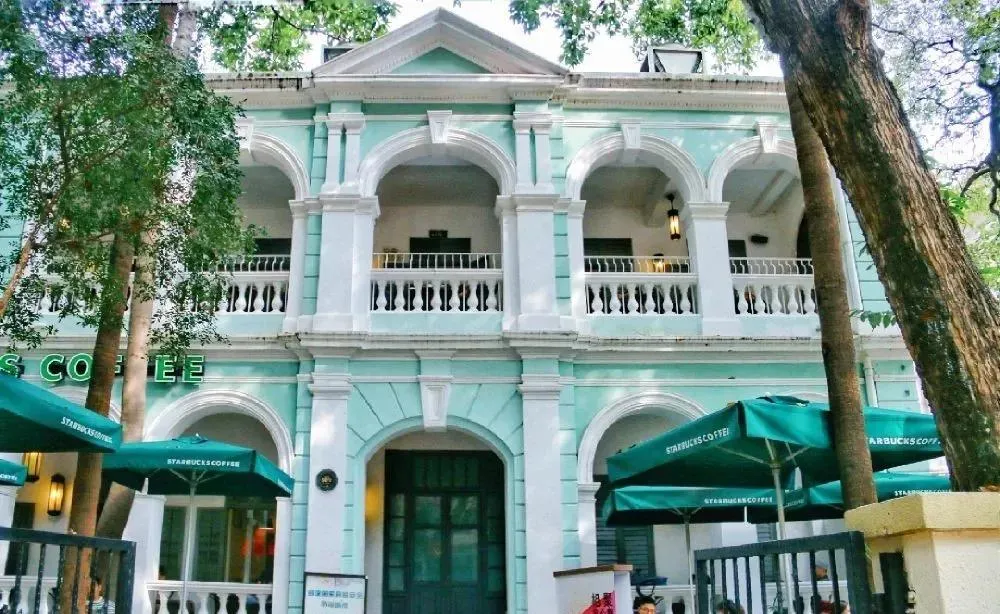
Cultural Immersion: Living History of Guangzhou
Is this Europe or Lingnan? Shamian’s architecture reveals clever adaptation. Those Venetian shutters? Designed for typhoon season. Raised colonnades? Pre-flooding solutions. Touch the “breathing walls” of Building No. 58 – porous lime mortar controls humidity, a technique later used in Chen Clan Academy.
Ritual Resonance
Time your visit with cultural moments:
- Qingming Festival (April): Watch families burn joss paper at European-style fountains
- Mid-Autumn Nights: Join lantern parades where merchants once traded opium
- Morning Soundscape: 7 AM erhu melodies drift from Building 27’s courtyard
Best Eateries Around Shamian Island: A Foodie’s Guide
Can cuisine explain cultural collision? Bite into Taotao Ju’s tea-brined pigeon to taste history. This dish evolved when Cantonese chefs incorporated British roasting techniques using local ingredients. For culinary time travel:
Flavor Landmarks
- Breakfast: Lao Lin Ji’s cheung fun (steamed rice rolls) since 1947 – arrive before 8 AM
- Coffee Revolution: Starbucks Reserve in Dutch Bank Building serves lychee espresso
- Underground Bites: Mrs. Liang’s shrimp wontons in Gallery 73’s attic (ring bell twice)
Planning Your Shamian Island Itinerary: Time-Saving Tips
How to experience depth without crowds? Master the rhythm:
Golden Windows
- 6-9 AM: Mist-shrouded photography + breakfast with dockworkers
- 2-4 PM: Avoid cruise groups at Christ Church
- 5:30 PM Ferry: Take ¥2 Huangsha ferry for sunset views
Essential Shamian Island Travel Guide: Logistics & FAQs
What practical secrets prevent headaches?
Stealth Navigation
- Metro Cheat: Use Huangsha Station Exit F’s pedestrian bridge
- Ferry Hack: Line S2 (¥5) beats subway crowds to Canton Tower
Budget Wisdom
“Free entry doesn’t mean free experience. Budget ¥100 for: bicycle rental (2hrs), church donations, and emergency ponchos.” – Local guide Mei Lin
Transitioning seamlessly from logistics, remember that Shamian’s true magic lives beyond checklists. As our exploration continues, we’ll decode how this enclave continually reinvents itself while honoring its layered past.
